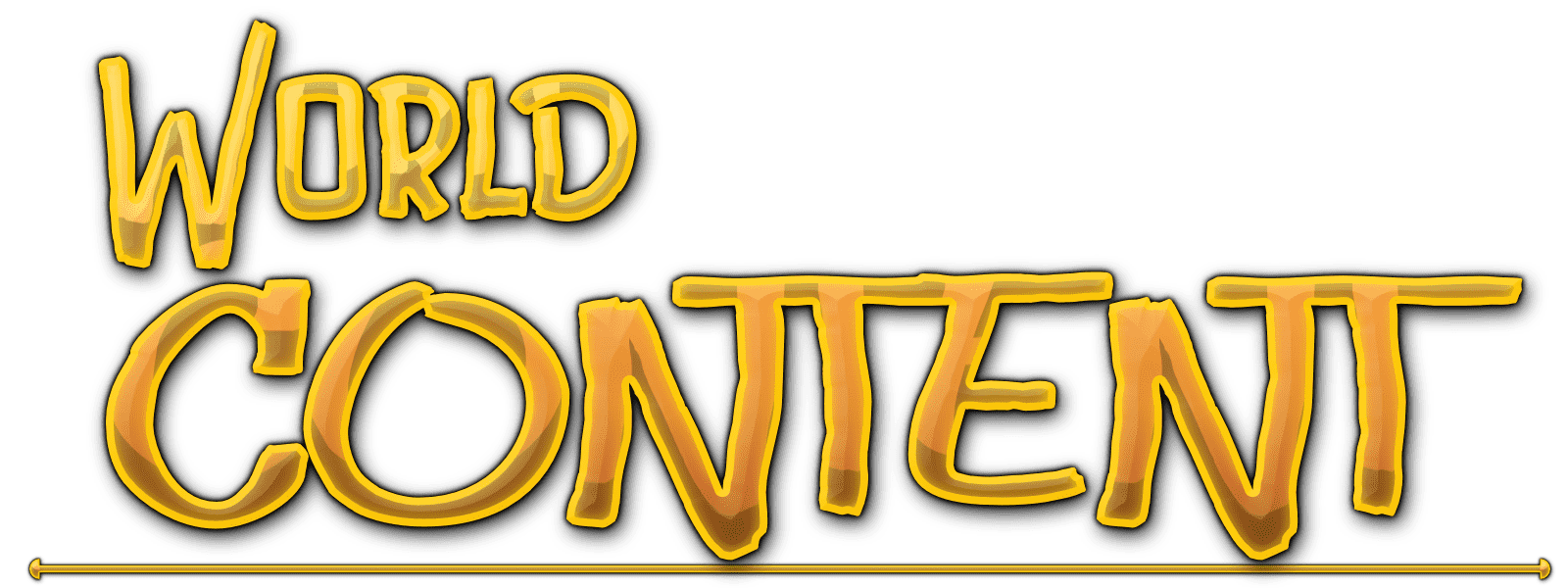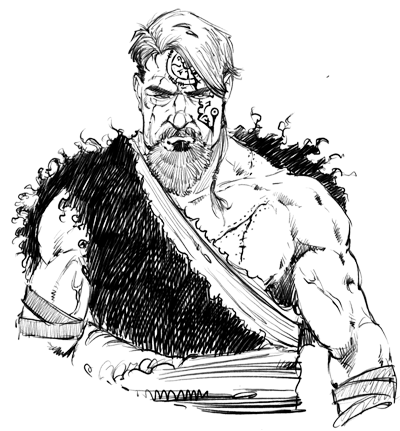Warrior. Survivor. Nethinim.
"Wo unto all those that discomfort my people, and drive, and murder, and testify against them…their hearts are corrupted, and the things which they are willing to bring upon others, and love to have others suffer.
Mine eyes see and know their works, and I am sent in swift judgment in the season thereof for them all; And not many years hence, they and their posterity shall be swept from under heaven, that not one of them is left to stand by the wall. This generation of vipers shall not escape the hell to which my blade shall send them. For I am sent to come upon them to the very uttermost; That they may be disappointed, and their hopes may be cut off…for none shall escape. They cannot hide nor can they run. For I am given to see as I am seen, and to know the darkness from the light, and by my blade and arm shall they be divided. It had been better for them that a millstone had been hanged about their necks, and they drowned in the depth of the sea. For there is a time appointed for every man, according as his works shall be.”
~ The Vow of Morgundö
Of the Nethinim1, Hagen is master of the mountains. It’s not something he claims, but what his brothers within the order freely acknowledge.
Unlike most of the group, he prefers a near solitary life, foraging and hunting for his needs, he ignores the elements, wandering among the Tilliman Highlands covered in rough-cut skins and fur. It is in the mountains he feels most at home and at peace when peace can be found.
Of trackers, he has no equal.
Tall and lithe, his rugged life in the wild has forged muscles of the finest steel and a powerful heart to outlast the beat of his enemy. While his brothers brandish all manner of weapons, Hagen is only ever seen with an elk-hilt long knife strapped to his hip and a giant, single-bladed battle-ax he calls Suhääva.
There are countless men who have met their foes upon the battlefield with axe in hand, but few of these have met their foes in battle and won.
Fewer still have driven the enemies mad with fear.
Only one wears a Sigil of Morgundö.
Sigils
Using magic was a way of life among those of Morgundö, revolving around a specific method called sigils. Usually, in the form of a tattoo or body art, these sigils could bestow a number of abilities, depending upon the glyphs used. These sigils were only given to those among the tribe who earned them—showing great value in their skills and will in bettering or defending the people as a whole.
All sigils were inscribed by the Vitkonä [vit-KOH-nah] or wise woman. A sigil could have a single effect, such as strength, endurance, or even to provide faster healing to its host, or a more complicated effect, such as ‘discerning’ the truth of a thing.
Suhääva
As a youth, Hagen’s skills with a blade were only exceeded by his natural talent with an axe. The motions and dance among foes made sense, shifting and using momentum, distance and arcs of force as naturally as breathing. When found at the front gate of the village, hovering over the bodies of three ridge wolves, the hunters of Morgundö gave a gift to the youth.
A single-bladed battle axe, inscribed with a special sigil crafted by the Vitkonä: a weapon that would never grow dull or break, so long as its wielder lived. She then brought the youth into her hovel and placed a secret sigil upon his brow.
The Nethinim
Like his brothers of the order, Hagen was fighting the forces of Mahan and found himself in a small village, seeking rare herbs for those stricken by the Clutching Lung. When the village was attacked by Mahan's general, Legion, and his cannibal horde, Hagen fought back. He returned to Morgundö to find his entire village a stone wall encasing ash. Axe in hand, Hagen tracked the enemy from his village, whispering The Vow of Morgundö until all the guilty had tasted Suhääva’s bite.
Rightfully Feared
Hagen has been called by many names over the years, and this due to his relentless aggression against evil. The Täuku know him as Vihä, while the Vallen call him Häutä (the grave) who cannot be overcome amidst the field. The Kutollum of the North praise him as Kuojä [QUO-yah] (death bringer), one of a handful of humans who came to the rescue of King Kimmeldell the Bold at the Battle of Northridge, defending the halls of Holääfeldi.
A Peaceful Side
A side note should be added here, which came from those who know Hagen best among the Nethinim, mainly Animal MacYoung, Silhouette and Quiver: the ruthless warrior of the mountains has a softer side. Should you travel to the outer villages, especially among the Tilliman Highlands, you will likely find stories of the ‘kind-giant’ visiting people in the dead of winter, or joining their merry Spring festivities. A warrior with a big smile and even bigger axe…and one whom the children love. Though Hagen would not confirm this when I asked, the stone expression faded and his brow relaxed."He can't fight if you take his limbs..."
"When a man chooses evil and defiles a woman, it is a mercy to send him to his Maker for judgment."
“Look with your eyes, but one can only see with their heart.”
AGE: Unknown
EYES: Pale Blue
HAIR: Medium length, Muddy Brown with streaks of grey
HEIGHT: 6’ 7”
WEIGHT: 18 Stone
Hagen has the strength, endurance, and stature of a human man who engages in intensive regular daily exercise.
Morgundö
Morgundö (morning dew) was a village of stark contrasts. There are only six mentions of this specific village that I know of in my professional studies2 For all the pristine beauty and curious workmanship worked by its people, death and shadow lurked just beyond its stone walls3.
It was a tribal priority to keep youth within the protective walls of the village and taught to fear the dark by their elders. All youth were taught forms of bushcraft, and once talents discovered, fostered in skills to strengthen the tribe as a whole.
Hagen took naturally to the wilderness and soon after the darkness also. Walking without fear in the violence of the world, he earned a place among the hunting parties of his tribe long before his rights of passage.
Family Structure
Families, which were strong Patriarchal structures by nature, were called Koko [koh-koh], meaning ‘whole’. Unlike some societies, the fathers of Morgundö earned their place as leaders by gaining the confidence and respect of their wives through humility, strength and loving his wife as the other part of himself.
To his parent, Hagen was born Jäkää [YAH-kah], which interpreted means to divide. Hagen was the oldest of four children, two brothers and a sister, though he would not share the names of his family out of respect for the dead.
One of the duties of sons was to guard the safety of the women. This wasn't just the safety of mothers and daughters, but of all women, regardless of blood. In fact, it was required of every male to give his life for a daughter in defense of her life and/or virtue.
DID YOU KNOW?
Hagen was inspired by Eric Shaver. When he isn't assisting companies design, develop, and deploy innovative technologies, he's sampling tasty hot sauces from Moscow. You can learn more about Eric by visiting his website, EricShaver.com, by connecting with him on Twitter @ericshaver OR follow him on Instagram
Hagen was inspired by Eric Shaver. When he isn't assisting companies design, develop, and deploy innovative technologies, he's sampling tasty hot sauces from Moscow. You can learn more about Eric by visiting his website, EricShaver.com, by connecting with him on Twitter @ericshaver OR follow him on Instagram










I am definitely in love with your CSS theme. I liked the character history, and wonder who "Eric Shaver" is to inspire such a character ahah. The transition between the narrator pov and first person felt a bit weird though, I don't really understand who is talking.
Thanks for the feedback =D I was hoping the footnotes (connecting the third word of the article) AND the fact that the whole world is a collection of entries from Hobin Luckyfeller, the Historian, would explain who is talking? Maybe I'm wrong. I read this again after your comment but didn't have that problem--because I didn't see anything other than a POV narrator--except when you read the footnotes. Would love to know if anyone else feels the same...?
Storyteller, Cartoonist,..pretty awesome friend =)
Subscribe to Life of Fiction to see the live results of all this worldbuilding.